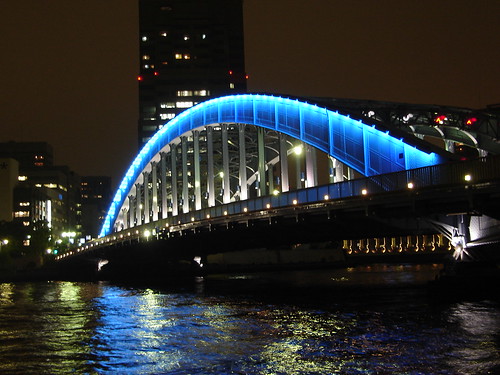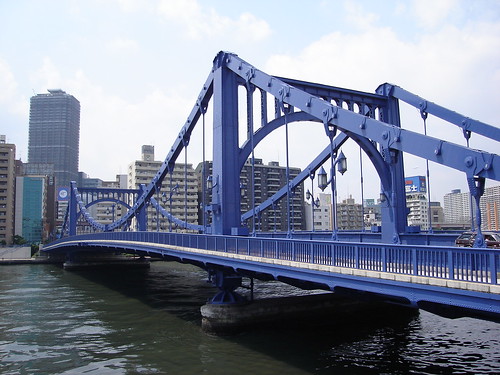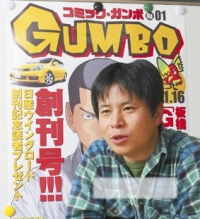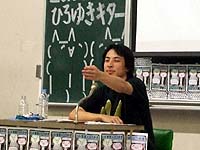How to live cheaply in one of the world’s most expensive cities? Well, it really isn’t that expensive unless you want it to be, and I will submit that living a broke life in Tokyo is MUCH better than living a broke life anywhere in America.
Here are some ideas:
 Lodging
Lodging
This is the big kahuna that makes life in Tokyo expensive. If you want a swank apartment in the middle of the city, it might set you back ¥400,000 a month. Fortunately, there are cheaper ways to do things.
- Best way: seduce someone of your preferred gender who has a nice apartment. If they’re female, they’ll even make you breakfast in the morning! (And if they don’t, find one who will; Japan is a buyer’s market.)
- Stay with a host family. You get conversation, you probably get meals, and you might even get your laundry done. On the other hand, host families have their drawbacks; you can’t go out partying late at night, and they might turn out to be batshit crazy. (I never had the former problem in high school; I definitely had the latter problem.)
- Get a place in the middle of nowhere, like a ¥40,000 room in Nishi-nippori located a cool 20-minute bus ride from the Yamanote Line.
- If you insist on living in the middle of the city, you can ditch your bathroom and live in a 6-mat room 5 minutes away from Shibuya for the same price. Granted, you have to go to a sento to clean yourself up, and your toilet is shared… but still!
- By the way, Yahoo! Japan Real Estate is an excellent resource for scouting out really cheap places to stay, assuming you know enough Japanese to navigate around. If English is your only language (or if you aren’t staying for a year or so), you might be relegated to the hell that is Sakura House.
 Food
Food
- There are always noodle products, of course, and those sketchy pasta sauces they sell in foil pouches at Don Quijote. Yum!
- If you want slightly better food, you can live on a diet of convenience store bentos, gyudon and curry for under ¥2,000 a day. Pretty easy, if not all that healthy.
- If you’re into eating out, my advice would be to get used to having big lunches. Many of the smaller restaurants around the business districts of Tokyo will sell you a massive lunch prepared with good ingredients for ¥1,000 or less. Then you can make your other calories for the day more or less blank.
- One of the best money-savers out there—as much as it might pain some of you to consider it—is to avoid booze. “What you say! No drinking in Japan? Heresy!” But it’s true: consider that a beer or chuhai will cost you ¥300 even at a cheap place.
Transportation
This one is easy. Ditch the subway and get yourself a bicycle. You might still want to hop on the Metro when it’s raining, but biking around is a great way to see the city, burn some calories and save some money. (I was spending ¥5,000 a month on Metro cards before I got my bike; at ¥10,000 it paid for itself after two nice winter/spring months, although it got pretty unbearable during the summer. If you have a cheap sento near your workplace, go for it! If you work at a sento, double points!)






 “I went back to my parents’ house after my home address was revealed on the Internet, but harassing phone calls kept coming into my office. Even my customers started to distrust me, thinking that I had someone (harassing me).”
“I went back to my parents’ house after my home address was revealed on the Internet, but harassing phone calls kept coming into my office. Even my customers started to distrust me, thinking that I had someone (harassing me).”